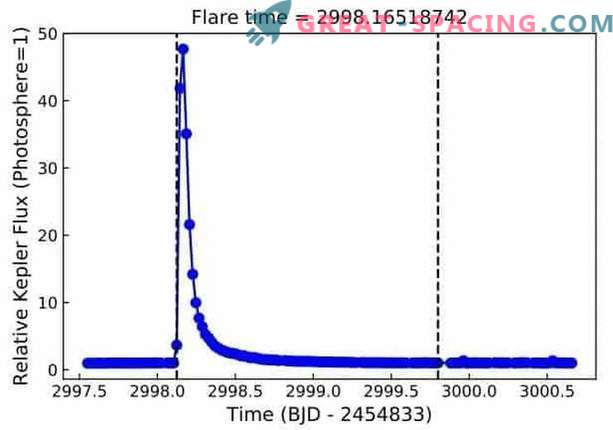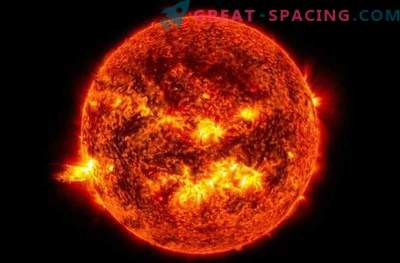
Using the Kepler telescope, the researchers were able to record two super-flashes on the young brown dwarf CFHT-BD-Tau 4. These were the most powerful flashes on such a star type over the entire time of observation.
In 2013, the Kepler space telescope lost two reaction wheels, and the satellite was transferred to mission K2 for high-precision photometry of selected fields in the ecliptic. During the campaign period 13 (from March 8 to May 27, 2017), K2 monitored the territory, including the area of the star formation Taurus-Chariot. The obtained data allowed us to identify two giant flashes on a brown dwarf CFHT-BD-Tau 4.
By age, the star reaches only 1 million years and belongs to the M7 type. It lives at a distance of 480 light years. The radius is 0.65 solar, the mass is 0.064 solar, and the effective temperature reaches 2900 K.

The strongest super-flash on CFHT-BD-Tau 4. Blue dots - observed information. Dotted vertical lines - start and end flash time
The analysis showed that a stronger flash (it was active for almost 2 days) was illuminated 48 times stronger than the relatively quiet photospheric level. The flare-up flash lasted almost 10 hours. The found super-flashes are useful for understanding how such phenomena affect the dynamic and chemical evolution of planetary disks around low-mass stars and brown dwarfs.










































